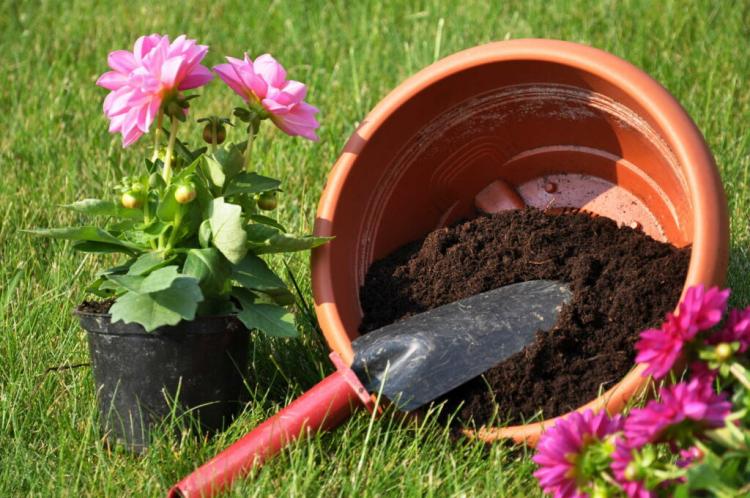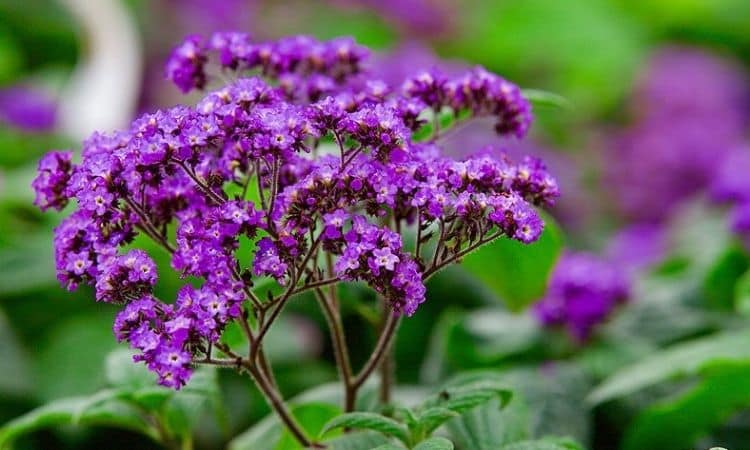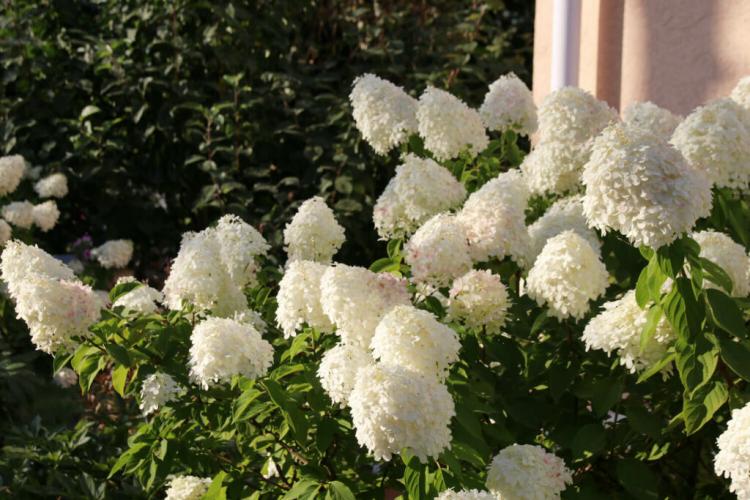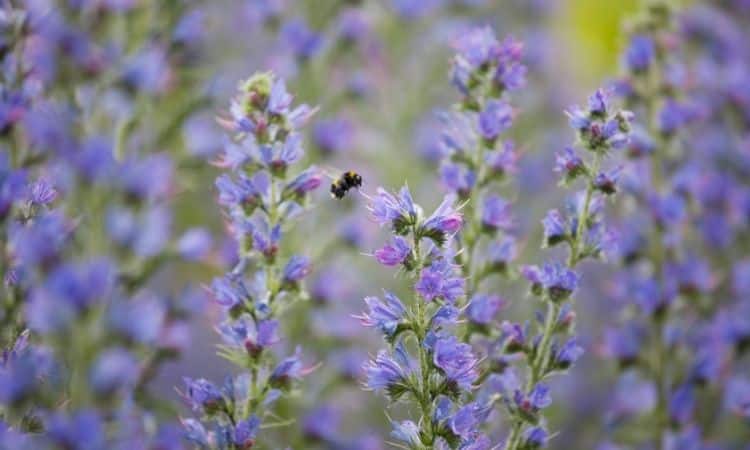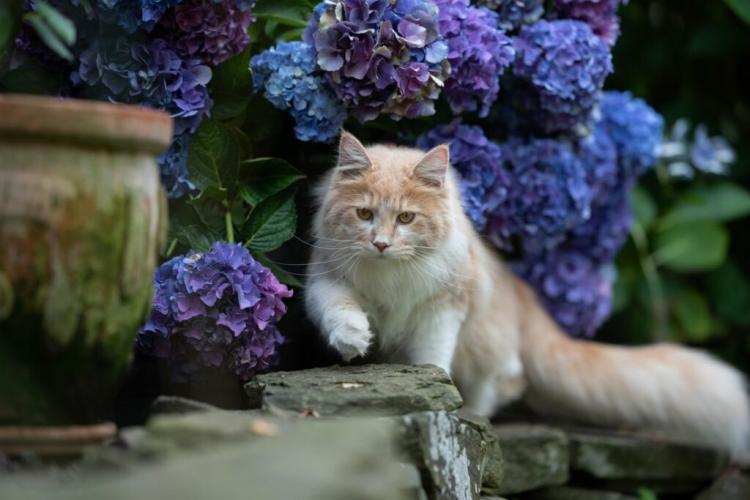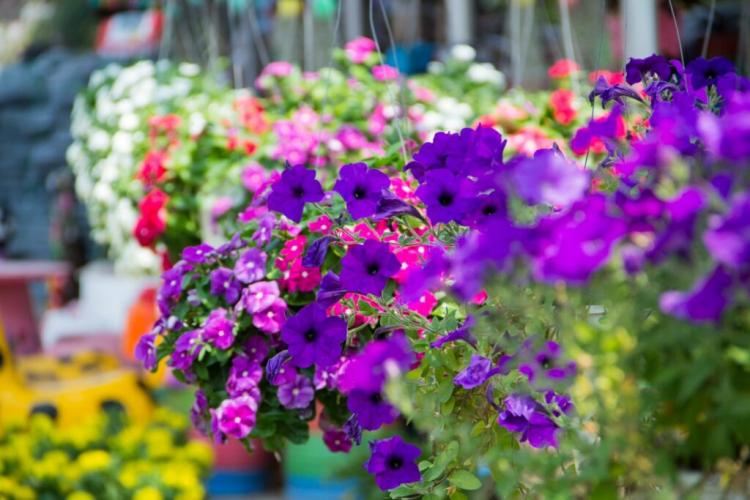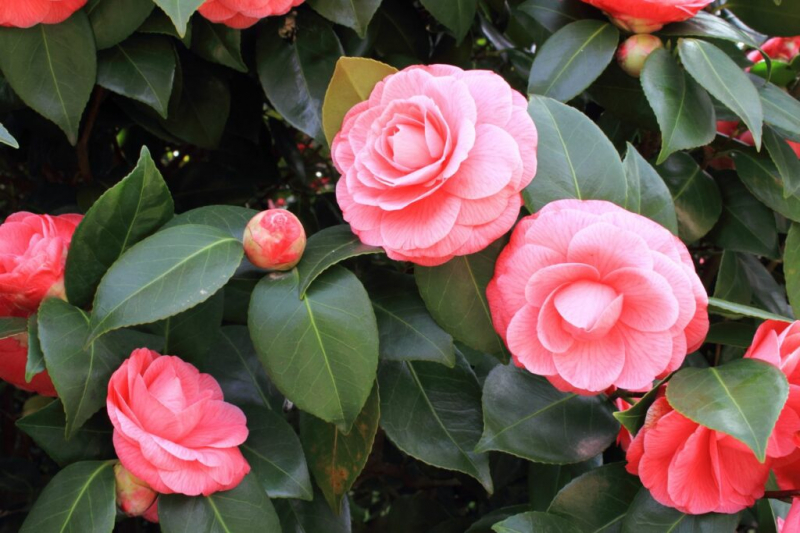Dahlias: Expert Tips About The Dahlia
Dahlias are lush and beautifully blooming summer plants. However, there are a few things to consider when handling the dahlia for successful flowering.
Dahlias – mostly bought as a tuber and found in many gardens – have long been one of the most popular ornamental plants. Originally from Mexico, the exotic dahlia (Dahlia) has found in the 18th century to the sailors on their way to Europe and has since become a hit in gardens and parks. The perennial, which belongs to the Asteraceae family, can also be easily grown in your garden with a few tips and tricks. We put together all the important information for you.
Dahlias: meaning and flowering period
Table of Contents
The genus of the dahlias comprises around 35 species, some of which are visually very different from one another. Curiously, the name dahlia does not come from the discoverer of the plant in the New World but was dedicated to the Swedish botanist Andreas Dahl when it was first cultivated in Europe. Every year from July the dahlias fill our gardens with their brilliant blossoms and can bloom well into autumn.
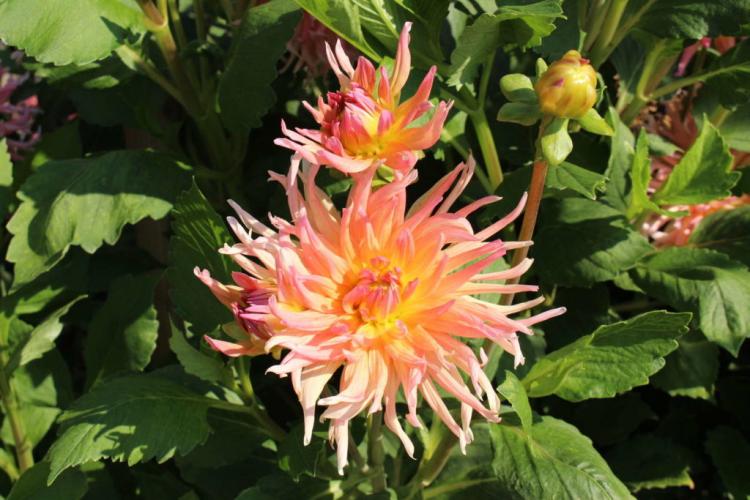
Buy dahlias: As a tuber or grown plant
The most proven method of growing dahlias is via tubers that are planted directly into the ground. But first of all the question arises: How and where can you buy dahlia bulbs and what should you pay attention to?
Buy dahlia bulbs
Dahlia bulbs can easily be purchased in any garden center, and they are often sold directly in batches. There are a variety of different shapes and colors to choose from. In any case, make sure that you only take healthy tubers with you without any rotten spots.
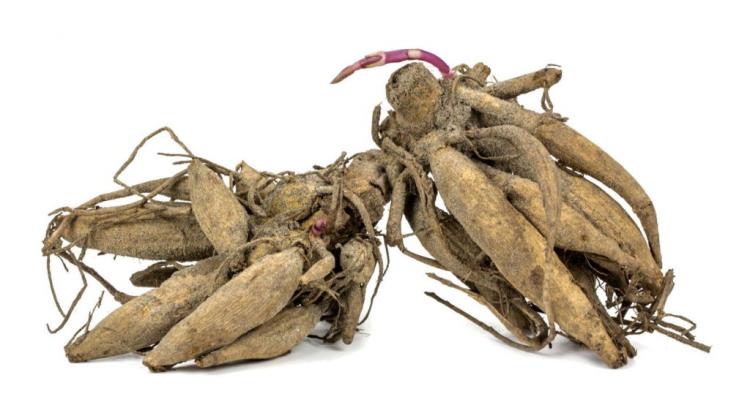
Buying dahlias in pots: what to look out for
Obtaining dahlias as a whole plant is much more difficult than buying onion form. If you decide to buy a plant directly, the timing of flowering can be brought forward by several weeks. The same also applies to dahlias grown in pots.
Dahlias: The most beautiful and most blooming varieties
Hardly any other ornamental plant has such a great variety as the dahlia. There are a total of 13 different flower shapes, each with a different color. We present the most handsome and popular varieties:
- Ball Dahlia: Round and relatively small flowers; very dense petals; is one of the most popular types of dahlia
Popular varieties: Peter, Marble Ball - Pompon Dahlia: Round and flat flower with completely rolled up petals; very decorative
Popular varieties: Barbara, Rocco - Cactus Dahlia: Round flower head with pointed petals; colorful marbling
Popular varieties: Cheerio, joker - Water lily dahlia: Flat flower with outward petals; Water lily look
Popular varieties: Paso Doble, Creme de Cassis - Deer antler dahlia: fringed and protruding petals; somewhat “wild” look
Popular varieties: Galaxie, Alauna Clair-Obscur
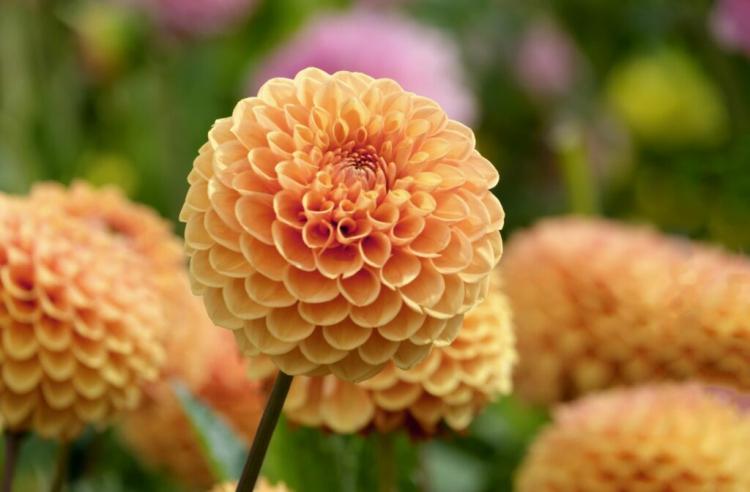
Planting dahlias: instructions and procedure
In spring to early summer the time has come and dahlias can be planted in the garden either as a plant or as a bulb. This step requires some information so that the dahlias have a good start in the bed and really sprout the striking flowers in all their shapes and colors.
Dahlias: the perfect location
As a subtropical plant, the dahlia makes higher demands than you would directly assume. When planting, make sure that the dahlia is in full sun, where the soil is nutrient-rich and permeable. Always work compost into the soil before planting. Good water drainage is essential as dahlias are sensitive to waterlogging.
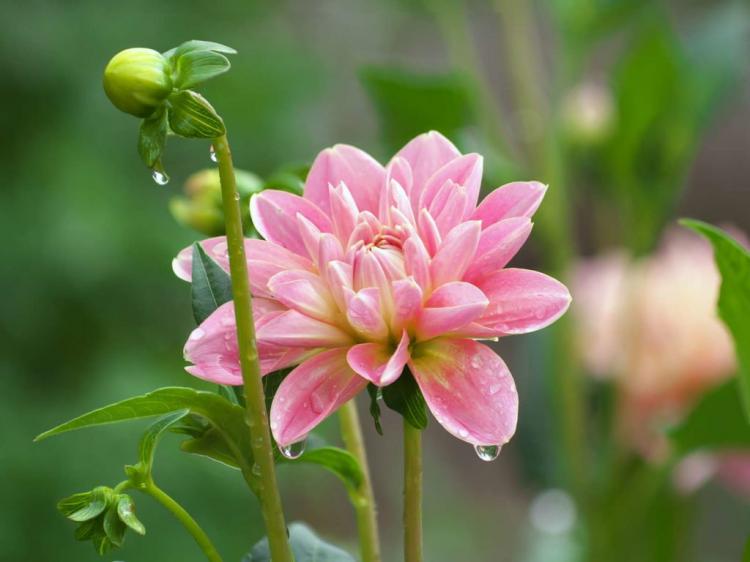
When is the right time to plant dahlias?
An important point for success with dahlia planting is the right time to plant the tubers or perennials. Dahlias do not tolerate frost and should therefore be planted in May at the earliest, as soon as the last late frosts are over. Starting too early can lead to the death of your plants due to the risk of cold.
Planting dahlias: How to do it:
When planting the dahlia bulbs, do the following:
- Choose a suitable location. The place should be sunny and the soil should be well drained and rich in nutrients.
- First, loosen the soil and work in plenty of compost so that the plant has enough nutrients available as it grows. If the soil is very clayey or loamy, it is worth mixing in a little sand.
- Dig a hole in which to put the tuber. The planting hole should be deep enough that the tuber is completely covered by the earth and the upper part is a few centimeters below the surface of the earth.
- Let the dahlia bulb stand in water for one night before planting so that it can absorb sufficient moisture again after storage.
- Then place the tubers in the planting hole with a planting distance of 30 to 100 cm – the size of the plant differs depending on the variety. When planting, it is important that the thicker part of the tuber is facing down and the root neck facing up.
Propagate, divide and grow dahlias
If you are reluctant to go to the store again to increase your dahlia population, there are various alternatives for increasing the magnificent flowering plants. We present all options.
Propagate dahlias by cuttings
A very quick method of propagating dahlias is to grow cuttings. This technique works by pulling out the dahlia bulbs in late winter at elevated temperatures. The bulbs sprout lightly embedded in the soil so that cuttings with a few pairs of leaves can be broken off after a short time. The dahlia cuttings are then placed in a growing medium and sprout again.
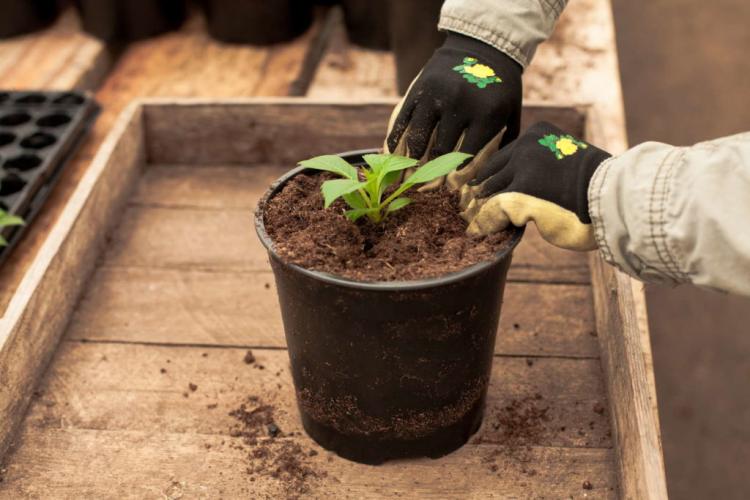
Divide dahlias successfully
A tried and tested method of propagating dahlias is to divide the tubers. In the spring before planting, cut the onion with a sharp and clean knife so that each part still has at least two eyes. As a rule, larger tubers are divided into two smaller ones in this way. The new shoots then develop from the eyes during planting.
Prefer dahlias
Much like the cultivation of cuttings, the premature cultivation of dahlias in the house works from March, with the difference that the plants are left on their tuber.
Caring for dahlias: the perfect dahlia care
The maintenance effort is generally limited with dahlias, but certain aspects should not be neglected even with the exotic plant. We show what needs to be considered.

Fertilize and water dahlias properly
Basically, it can be said that the amount of fertilizer required for dahlias is manageable. Before planting, it is always a good idea to work compost into the soil. Nitrogen-containing fertilizers lead to increased leaf growth in dahlias, but this also reduces the plant’s willingness to flower. Therefore, a flower fertilizer that does not contain too much nitrogen is recommended. Organic flower fertilizer meets these requirements and also promotes healthy and active soil life. This can be worked in regularly and superficially until August.
When watering, you should also be moderate to work, as dahlias do not tolerate waterlogging well. Water the plant every few days as needed when the soil has dried out. On the other hand, you should water more during periods of intense heat in summer, as the expansive plant evaporates a lot of water at high temperatures.
You might so like: Fertilize Dahlias: The Right Fertilizer For The Perfect Flower
How to cut dahlias properly
In the case of dahlias, cutting in suitable places can increase the abundance of flowers and influence the shape of the plant. It, therefore, makes sense to cut off the tips of the shoots individually, especially when they are young, to increase branching and thus the formation of flowers. Wilted flowers should also be cut off so that new shoots can be formed.
The following applies: if you leave a few shots on the plant, the respective flowers will be all the larger.
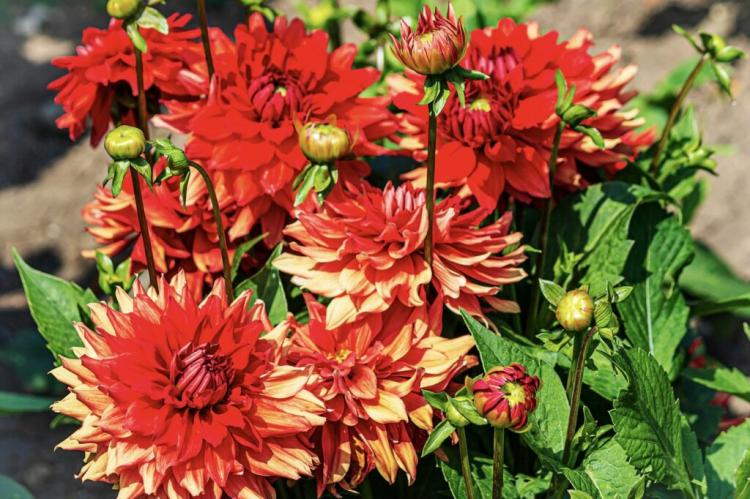
Maintain dahlias in pots
Dahlias in pots are very easy to care for and require comparatively little attention. Since the soil naturally dries out faster in pots than outdoors, you should always keep an eye on the moisture of the substrate and avoid drying out completely. As in the field, dead flowers should be removed regularly.

Dahlias: combating common diseases and pests
The most common diseases and pests of dahlias are presented below:
- Snails: Particularly annoying because they can eat a lot of the green in a very short time. This can be remedied by snail traps and fences as well as collecting the animals in the early morning.
- Aphids: Small black or white insects that feed on the plant. It helps to dab the affected areas with soapy water. Ladybugs act as a biological control.
- Gray mold: The botrytis fungus can be recognized by its gray coating. Do not plant too densely and avoid high humidity, do not wet the plant with water, and avoid nitrogen fertilization.
- Powdery mildew: This can be recognized by the whitish coating. The same measures as for gray mold can reduce the risk.
- Mosaic virus: Can be recognized by yellowish spots on the leaves. The best countermeasure is to remove the plant to avoid further contamination.
You can find out more about caring for your dahlias here.
Hibernating dahlias: are dahlias hardy?
Due to their warm origin in Mexico, dahlias are not frost-resistant and therefore not winter hardy. Leaving the tubers in the ground is at your own risk and can only be achieved in very mild regions if sufficient winter protection from brushwood, straw, and leaves is spread over them. As a rule, however, the tubers should be dug up right after the first frost. To do this, first cut the plant to 10 cm above the ground and carefully dig out the bulb. The individual tubers can now be stored in a dry and cool, but frost-free place until spring. Before storage, remove the soil and spread the tubers airy with a little space.
You can find more tips for the ideal flowering of dahlias here.
